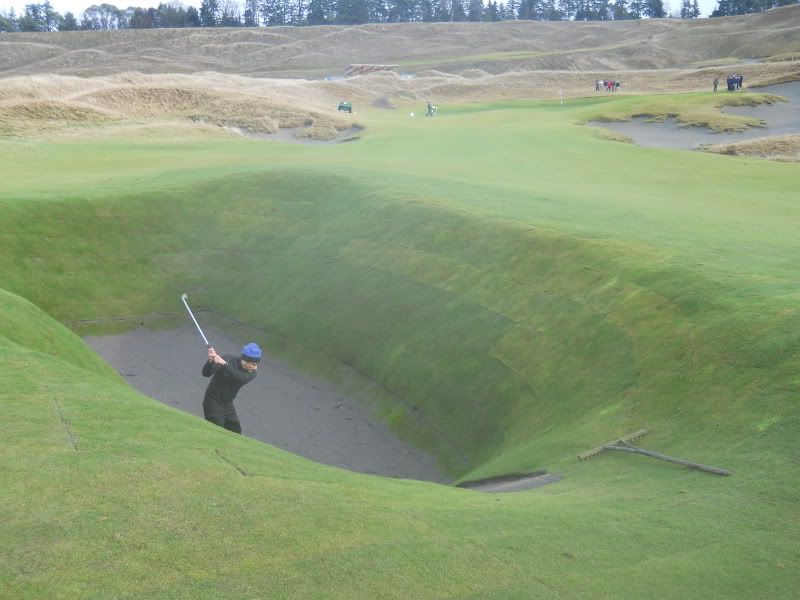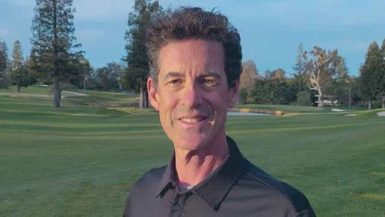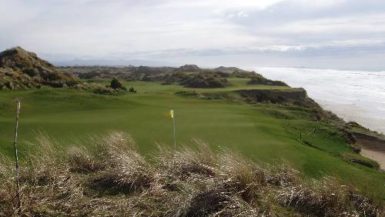
Try to time your arrival at Chambers Bay so as to be there for sunrise, the light is magnificent. As the sky slowly brightens from black to deep purple to blue, they’ll appear before you: eighteen precious jewels, each prim as a cameo, yet as cunningly and carefully designed as the many intricate facets of the gemstone.
Yes, everything you’ve heard about Chambers Bay is true, and more so. It richly deserves the U.S. Open, and with its sandy soil, its seaside setting with Puget Sound framed by fragrant, verdant tree-clothed hills, and its unique golf holes it will be a brilliant and memorable host for 2015 and (hopefully) many more U.S. Opens to come. It may have taken 120 years but America’s golf National Championship will finally be contested in the Pacific Northwest – and what a time it will be.
Much of the thanks go to the single-minded dedication and tireless passion of former county executive John Ladenburg, who summed up his strategy for getting the U.S.G.A. to pick Chambers Bay as the venue in one concise statement:
“Everything we did here, we did with one question in mind: Does this get us closer to or further away from getting a U.S. Open?”
In 2000, when Ladenberg was Pierce County Executive, he decided to put the immense, pristine, county-owned 930 acre stretch of property next to Puget Sound to dual use. At that time, the south 130 acres were a sewage plant, while the northern 800 acres were a sand and gravel pit.
Realizing that the county needed a much better public use of two miles of pristine, scenic shoreline than could be achieved by gravel mines, Ladenburg made the bold move of not renewing the lease of the gravel company.
“All those scenic views and all that beautiful acreage with sandy dunes could and should be enjoyed by everyone. The land was perfect for golf, parks, trails, and arboratums,” explained Ladenburg. While golf is the only one of those public uses that returns revenue for open space, happily there was plenty of room for a golf course and all the other public sporting uses as well.
“The idea was to build a public affordable golf course, which is not cheap to do. Chambers Bay cost $22 million to build,” continues Ladenburg. “We wanted a course that would draw golfers from all over the nation, but was reasonably priced, a great value. I had just read the book Open by John Feinstein, which is about Bethpage, and I thought: Why can’t we do that here? Why can’t we be the Bethpage of the west coast?”
With Jones at the helm, what they got was the Pebble Beach of the North, (and then some!) For all its good points, Bethpage Black drains nowhere near as well, (it’s been soggy for both U.S. Opens), and it doesn’t have much of a natural setting to speak of. And Chambers Bay is much stronger and more interesting from start to finish than Bethpage Black, which becomes more dictatorial and penal from the 12th hole.
It was Jones’s long body of work, significant experience overseas, and deep knowledge of links golf that cemented his selection as the architect. Puget Sound has the exact same climate conditions as Scotland and Ireland and the same native fescue grasses as well. Moreover, the site had 800 acres of sand – a true linksland course could be built in the Scottish-Irish tradition.
“We knew that if the design was good enough and the uniqueness was good enough, we had a shot at a U.S. Open, and we knew Bob Jones was the architect who could make the most of the landscape we had here. He could get us closest to our ultimate goal,” affirmed Ladenburg.
Ladenburg further explained the process of building the course and getting the Open:
John Ladenburg: It started with Jones’s design team. When they came to their final interview, they handed out bag tags that read “2030 U.S. Open.”
Jay Flemma: They missed by 15 years on the good side.
JL: Well, we sure liked their enthusiasm.
JF: How does the design of the 7th hole get you closer to a U.S. Open?
JL: Because it’s one of the more challenging holes in America, but if played correctly, can be overcome. It’s also totally unique, like nothing else in the World.
JF: It does help give the course more of its indelible character.
JL: You’ll remember that hole after playing it.
JF: You might never forget it.
JL I also told the team that the reason why some courses didn’t get the Open was because they compromised on one or two little things.
JF: Like what?
JL: Like no cart paths, because carts hurt the fescue. So we sacrifice the 30% of golfers who take carts only.
JF: What else?
JL: We pulled the holes apart so we had room for crowd control. We can fit two Bandon Duneses inside Chambers Bay. We put 18 holes on where others would have built 27 or 36. We even measured other U.S. Open venues to see how much room they had (and we therefore needed) for tents and other infrastructure.
[Author’s Note: In that case, I hope the media tent is conveniently located near the first tee/18th green…I’m sick of these mile walks and “exit and re-enter” for the most direct route” set-ups the last four years…]JF: What venues did you study?
JL: Torrey Pines, Merion, Bethpage Black, and some others. We wanted to know how much room they needed, and then our instructions to the team were to build twice that space at Chambers Bay. Then we constantly invited the U.S.G.A. out during and even before construction. We asked them “What more can we do?” and said “If you see us doing something wrong, we’ll change it.” Finally, one day in 2007 we got the phone call. They needed a course to fill in the gap for 2015. I told them our acceptance is in the mail.”




